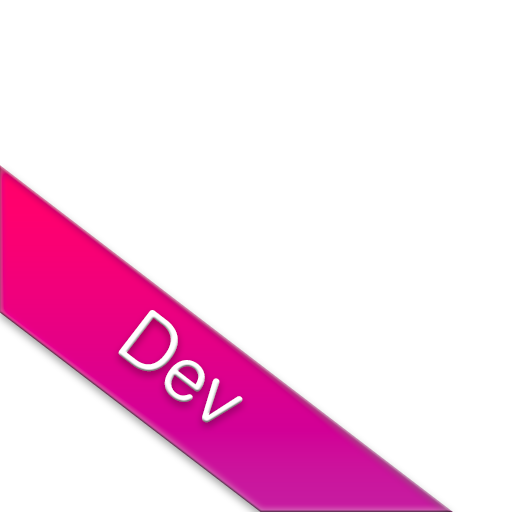Configuring Images
The first time the Mobile.BuildTools encounters an image it will automatically generate a default image configuration file along side of the image. This file is what allows you to customize and further refine the image that you want. A configuration file may reside a conditional search directory. The Mobile.BuildTools will opt to use a configuration that is not in the same file directory as the image resource any time that a duplication is found.
Warning
Keep in mind that we only ever support a scenario where you have a single configuration in a directory other than the original image. In the event that two or more configurations are found for the same image in directories other than the directory where the image is located the Mobile.BuildTools will throw an exception causing a Build Error.
Note
If you have an image name that contains white space such as foo bar.png, the Mobile.BuildTools will sanitize the file name replace any contiguous white space characters with a single -. This normalization is required by Android and will mean that you will need to reference the image as foo-bar.png.
Configuring Images¶
The Schema for configuring images is rather simple by design. We allow you to specify a watermark file name, a name, a scale and an optional ignore. To start let's consider that we have an image named Mobile-BuildTools.png. We know that we cannot get away with this file name on all platforms so we want to rename the generated image.
{
"$schema": "http://mobilebuildtools.com/schemas/v2/resourceDefinition.schema.json",
"name": "mobile_buildtools"
}
The above sample would allow us to have a resource named mobile_buildtools when we refer to this from our Xamarin code.
Platform Specific Configurations¶
There is a common schema for image configuration which includes the following properties:
{
"$schema": "http://mobilebuildtools.com/schemas/v2/resourceDefinition.schema.json",
"name": "someName",
"scale": 0.875,
"backgroundColor": "#ffffff",
"ignore": false,
}
This schema is available generally for each image and can be used to further tweak or customize for the platform. As an example let's consider that we want the Mobile-BuildTools.png to be used as the app icon. We will want to use the App Icon Set on iOS named AppIcon and we'll want to use the image name icon on Android. To accomplish this our configuration would look like:
{
"$schema": "http://mobilebuildtools.com/schemas/v2/resourceDefinition.schema.json",
"android": {
"name": "icon"
},
"apple": {
"name": "AppIcon"
}
}
Let's now consider a few facts about our icon that would be quite common, particularly when sharing the same resource between iOS and Android for the App Icon.
- We want the Android resource to be in the mipmap folder rather the drawable folders
- Our full size image is much larger than the full size icon should be for Android
- Our image has a transparent background which will need to be adjusted on iOS
Given these additional criteria we would want to update our configuration as follows:
{
"$schema": "http://mobilebuildtools.com/schemas/v2/resourceDefinition.schema.json",
"android": {
"name": "icon",
"resourceType": "Mipmap",
"scale": 0.375
},
"apple": {
"name": "AppIcon",
"backgroundColor": "#fc7e00"
}
}
Note
Android specific configuration defines an additional property for the Resource Type. By default this is set to Drawable. You can however change this in your image configuration for mipmap resources.
Watermarking Images¶
One of the great things that the Mobile.BuildTools supports is watermarking images at build. This is a very powerful feature as shown below. To configure images for Watermarking there are a few simple steps that you will need to take.
Let's first make a couple of assumptions.
- You have your base resources in the path
Images - This includes an image asset called
icon.png - You have a subfolder called
Images\Debug - Inside of this directory you have a watermark file called
beta-version.png
In order to set this up our buildtools.json might look like this:
{
"images": {
"directories" : [ "Images" ],
"conditionalDirectories": {
"Debug": [ "Images\\Debug" ]
}
}
}
| icon.png | beta-version.png | output: icon.png |
|---|---|---|
 |
When the Mobile.BuildTools runs and the Image collector locates an image, it will automatically generate a default JSON configuration file. The configuration file must have the same name as the image without the file extension. As a result after the first run our output image will look exactly the same as our input image only resized, and we would also have an asset added for the beta-version.png although this was not what we had wanted. The file system will also now contain the new files Images\icon.json & Images\Debug\beta-version.json.
You will not need to do anything to the Images\icon.json file, however you will want to copy this to Images\Debug directory. Next you'll want to open a text editor such as Visual Studio Code which will automatically pick up the schema referenced in the generated file and give you intellisense as you work on the file. We'll update the following two files as follows:
Images\Debug\beta-version.json
{
"$schema": "http://mobilebuildtools.com/schemas/v2/resourceDefinition.schema.json",
"ignore": true
}
Images\Debug\icon.json
{
"$schema": "http://mobilebuildtools.com/schemas/v2/resourceDefinition.schema.json",
"watermark": {
"sourceFile": "beta-version"
}
}
Warning
When using Conditional Directories to modify images with watermarks be sure that there is never more than one conditional configuration included. Doing so will result in a build error as the Mobile.BuildTools has no way of know which conditional configuration to use.
With our updated configurations we can now rebuild and the Mobile.BuildTools will generally ignore the beta-version.png as an asset of it's own while it will apply the beta-version.png as an overlay to our icon during our debug builds.
Drawn Watermarks¶
Just like mentioned above we can provide a configuration file for our image in a conditional directory to use the full watermarking power without having to have any specific image resource for our overlay. The Mobile.BuildTools provides a built in powerful drawing API with 6 different layout options and complete customization of the text, font and colors used.
{
"watermark": {
"colors": [ "Purple", "#008888" ],
"text": "Dev",
"fontFamily": "Times New Roman",
"opacity": 0.85
}
}